Sound and Sensory Spaces in British Neolithic Burial Monuments
| ✅ Paper Type: Free Essay | ✅ Subject: Architecture |
| ✅ Wordcount: 2616 words | ✅ Published: 23 Sep 2019 |
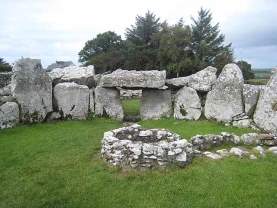
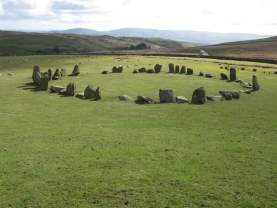
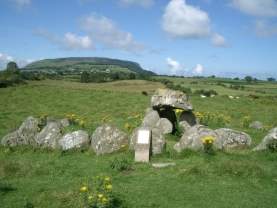
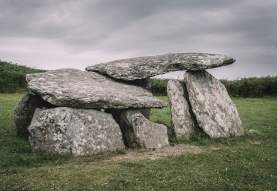
CC2: Illustrated Essay
Explore how sound has been used to create ‘sensory spaces’ in British Neo
lithic burial monuments
Explore how sound has been used to create ‘sensory spaces’ in British Neolithic burial monuments.
The Neolithic era is the late part of the stone age, ranging from 4000-2500 BCE. It is at this time, that hunter-gatherer communities began settling down and adopting farming as a means of sustenance. It is believed that this shift begun by means of a large group of people moving across the channel and adopt life in Britain. Throughout this period, a number of different burial monuments and practices emerged from across the British Isles, some of which are:
- Stone circles
- Chambered cairns
- Court cairns
- Portal tombs
- Wedge tombs
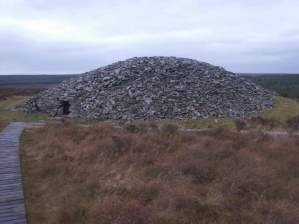 These are all known as megalithic monuments, derived from the Greek words megas meaning large and lithos meaning stone. Such monuments are comprised of large blocks of stone but are articulated differently according to location. This is because burial practices and rituals will differ from region to region. In this essay I will be looking at the passage graves of Ireland and the Scottish Highlands and will explore the acoustic properties of Camster Round, a chambered cairn in the Orkney Islands that was built approximately 5000 years ago.
These are all known as megalithic monuments, derived from the Greek words megas meaning large and lithos meaning stone. Such monuments are comprised of large blocks of stone but are articulated differently according to location. This is because burial practices and rituals will differ from region to region. In this essay I will be looking at the passage graves of Ireland and the Scottish Highlands and will explore the acoustic properties of Camster Round, a chambered cairn in the Orkney Islands that was built approximately 5000 years ago.
Camster Round is an ideal choice for such experiments as it was renovated in the 1960s using material derived from the site and has retained its integrity. A glass roof plate was added during renovations but was not considered a serious impact on acoustic tests as such minor architectural details only have negligible effects on the behaviour of sound. This site was also chosen because tombs with enclosed chambers create the most dramatic acoustic effects.
Burial practices vary throughout the Neolithic and parts of two skeletons were found at Camster round, the bodies were dis-articulated, meaning that they were incomplete, and were likely exposed before burial in a process known as excarnation. Rituals would have also taken place within the chamber, this would have been almost certainly conducted by a shaman on key dates throughout the agricultural and solar year. Much is the same for other monuments of the period. For example, at Newgrange passage grave in Ireland, on December 21st light shines down the passage in to the chamber for just a few minutes, illuminating a space that is otherwise shrouded in darkness for the year. This is not a coincidence; the orientation of the monument reflects that the builders had a great understanding of solar angle and the Earth’s position around the sun. This date is important as it is the turning point in the year where the days begin getting longer, and that the new growth of spring is fast approaching. Rituals would have taken place at this time to honour the passing of community members throughout the year and bury the dead. Also, to give thanks to the ancestors for Autumn’s harvest.
Camster round consist of a stone chamber that is enclosed by a cairn of boulders. The entrance is through a narrow passageway. The first 6m of the passageway is claustrophobic, being only 0.5m wide and 1m high. It is circular in plan with a central chamber, on the Eastern side of the cairn is a forecourt. The passage broadens in to an antechamber, from which the main chamber is accessed through a narrow portal. Dry stone corbelling rises 3m above the ground surface 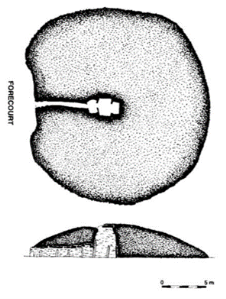
and is sealed by a large roof slab.
Figure 1: Camster Round from the exterior showing the entrance and forecourt. Photograph from AncientScotland.com
Figure 2: A plan and elevation of Camster Round showing the extent of the cairn and details of the chamber and passage. From Davidson & Henshall 1991: 103
Evidence from experiments at stone circles suggested that the stones project speech and other sounds across specific areas of the site. In addition, more subtle reverberations appeared to originate from different places around the circle. Such phenomena could not be easily explained but it was noted that stones had sometimes been carved in to a concave shape, perhaps to reflect sound. Could passage graves also have been designed in a way that changes the behaviour of sound?
An experiment was conducted at Camster Round by Aaron Watson and David Keating, researchers from the University of Reading to conclude whether this was the case. A loudspeaker was placed in the central chamber and was set to emit a constant pink noise. Systematic recordings were made using a microphone and digital recorder throughout the monument to assess the horizontal distribution of sound. Three main effects were concluded:
- The stone walls of the cairn reflected rather than absorb sound waved. This causes standing waves to form and amplified noises and created echoes.
- Sound was transmitted along the passageway but became fainter with distance from the loudspeaker.
- Outside the tomb, sound could be heard emerging from the passage entrance, but its amplitude decreased towards the forecourt. This is because sound waves move more freely through the open airspace in the passageway than through the cairn material.
Interestingly, walking around the edge of the cairn, it was observed that the sound emanating from the chamber was not constant at all points around the circumference. The enveloping cairn material acted as a filter, thus influencing the transmission sound.
The standing waves are produced when two equal waves in amplitude and frequency travel toward each other and collide. This produces zones of high and low intensity as waves cancel or combine. Devereux & Jahn’s 1996 assessment of standing waves at a number of passage graves including Newgrange concluded that this effect could be evoked by vocalization or instruments.
A continuous note was played in the chamber at a variety of pitches until an audible change was heard. Several frequencies were accompanied by a surprising range of effects:
- The source of the note became unclear, it seemed as if it was originating from different directions or from within rather than the loudspeaker.
- People in the chamber could detect movements of individuals along the passage, as the solid mass of their bodies creates microtonal disturbances in the distribution of sound waves.
- Speech became distorted within the chamber.
All these effects occur simply as a result of playing a continuous note within the chamber, such techniques are unlikely to have been beyond the ability of Neolithic people. Additionally, there is a possibility that instruments of the period may possess interesting effects of their own.
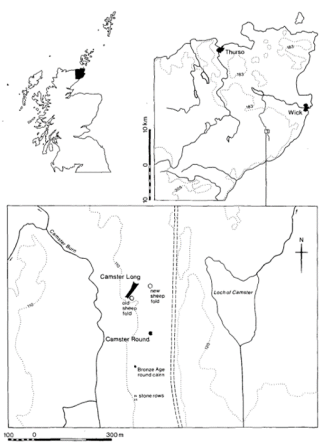
Whereas, it is not possible to generate standing waves with percussive instruments, drums were used at Camster Round in a similar experiment. The sound became increasingly distorted away from the passage entrance as the highest frequencies were filtered out by the cairn material. The bass became enhanced. Around the perimeter of the tomb, the sound became deep and unfamiliar and was perceived to be emanating from the ground.
It was theorised that drumming sounds may have been used to communicate between monuments at close proximity. The sound did not travel far beyond the cairn, this was likely due to natural background sounds such as wind in addition to sound filtration through stone. The sound could not be heard further than 100m from the external perimeter of the cairn. However, the sound was heard from within the nearby monument of Camster Long which is approximately 190m away, see figure 3. Again, the sound appeared to be coming from the ground. It is possible that the calm air within Camster Long permitted sounds to be heard more clearly without disturbance from natural sources in the outside world.

This effect is not limited to the Camster cairns, other monuments where there are tombs in close proximity would also have the same effect. For example, Knowth, in Ireland is a site where a large tomb is surrounded by smaller satellite cairns orientated towards the central tomb, see figure 4.
Figure 4: A plan of Knowth, Ireland. Showing orientation of satellite burials, perhaps in an attempt to permit easier sound transmittance. Source: Cambridge.org
Figure 3: Location map showing Camster Round, Camster Long and surrounding context. Source: Lionel Masters, University of Glasgow, Glasgow G12 8QQ
A further experiment was conducted by Aaron Watson and David Keating to determine whether the architecture of Camster Round permitted the Helmholtz resonance. A sound of a specific frequency was played within the chamber; this frequency is determined by the relative volumes of the camber and passage which can be determined using plans within an acceptable margin of error. Sound waves generated within the chamber cause the air to gain energy and expand, pushing against the mass of air confined within the space and passageway. “A critical point is reached when the elastic properties of the air overcome this outward motion” (Watson & Keating, 1999), thus, causing the air inside the passage to retract towards the chamber.
“Helmholtz Resonance occurs when this oscillation becomes synchronized with the pressure waves emitted by the sound source, causing the waves to increase in amplitude”, ( Smith & Powell, 1964). The resulting sound is greater than the original input. The results suggested that Camster Round would resonate at a frequency of 4 Hz, this is an infrasonic frequency, meaning that it is beneath the audible threshold for human hearing. However, infrasonic sound has been known to have surprising effects on the mind and body. Thus, Helmholtz resonance could contribute to the sensory experience of being within the tomb.
Short drumming tests were conducted at Camster Round to determine if this was the case in the presence of an audience. Many listeners “complained of a range of unfamiliar sensations which correlate to those to be expected from infrasonics” (Evans, 1976). Particularly, participants felt that their “pulse and breathing pattern was being influenced, raising the possibility that long term exposure could result in hyperventilation”, (Watson & Keating, 1999).
While it is possible that the noise and surroundings inside the monument could influence behaviour, fewer complaints were made during equally loud tests at beats too slow to induce Helmholtz Resonance. All reported sensations rapidly declined when the drumming stopped.
This experiment was reproduced at other passage graves if their structure was well preserved. This confirmed that:
- Larger tombs have lower resonant frequencies and would require a slower drumbeat to evoke Helmholtz Resonance.
-
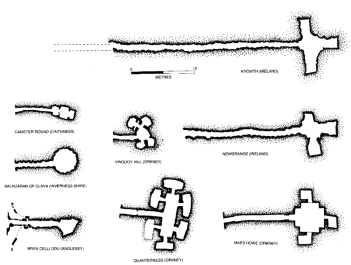
Groups of tombs with similar internal volumes will have similar resonant frequencies, irrespective of their precise architectural morphology.
Figure 5: Plans of similar passage grave chambers that have resonant frequencies. Source Watson & Keating.
What first comes to mind when one thinks about ‘altered stated of consciousness’ is hippies and LSD, but some altered states have little to do with drugs. Also called non-ordinary states, such states of consciousness involve the mind being aware, but not in its usual wakeful condition. Such as during meditation, hypnosis, hallucination, trance and the dream state.
“Drumbeats are often associated with activities which seek to create links with the supernatural and are often associated with ritual procedures across the world, but it has also been proposed that the sound waves produced by percussive instruments may contribute to the inducement of altered states of consciousness”, (Neher 1962; Needham 1967). Furthermore, according to P. Debertolis and N. Bisconti (2014), infrasound can create feelings of awe or fear in humans, in some cases resulting in a belief that a strange or supernatural event is taking place. Did Neolithic human beings feel similar sensations, caused by sound while inside chambered monuments? Could megalithic art that exists in some chambers be related to these bodily experiences? The answer is almost certainly yes. Figure 6 shows a comparison between phosphene motif’s and 
those found in paleo-art.
Figure 6: A comparison of phosphene motifs with (b-e) the motif ranges of early palaeo-art. Source: After Bednarik, 1984.
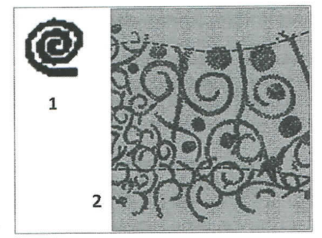
Figure 7: Phosphene spiral motif (1) compared to prehistoric paintings (2). Source: OTSF
It is well known that sound has a large influence on people, despite infrasonic sound not being heard it can be ‘felt’, including a variety of sensations such as “dizziness, headaches and disorientation”, (Watson n/dated). D. Keating, allegedly, during acoustic testing at Maeshowe “reported being put in to a state in which his body became relaxed but his mind alert, an initial stage of deep trance” (Landscape-perception n/dated). Although responses to infrasonic sounds differ between individuals leading to diverse phycological and physiological effects.
Darkness, the presence of the dead and sound effects may have been combined to create experiences and induce altered states of consciousness for those inside. Throughout the Neolithic, such states were used to communicate with the ancestors through a shaman. Participants inside the tomb would hear sounds and echoes, while those outside would only hear filtered sound emerging from the cairn. Only very few would have been permitted within the tomb during the ritual; at Newgrange, less than 15 people are allowed within the chamber during re-enacted rituals. This would have heightened the sense of mystery regarding unseen activities within the tomb and empowered those who were able to produce such transformation of sound when in presence of the dead.
The architecture and location of monuments may be a deliberate attempt in manipulating how tombs and the activities that would have taken place at them were experienced. Passage graves can restrict and influence bodily movement, the senses, space, airflow and temperature. Furthermore, tombs can dis-orientate, humble and generate fear in those who enter. This stressful environment, heightened by repetitive sound waves and by infrasonic components would induce altered states of consciousness and create a sensory and memorable experience.
It is remarkable that the builders of these monuments exploited this, intentionally using architectural techniques to boost these ‘super-acoustics’. Strategies such as elongated inner chambers and corbelled chamber ceilings appear to have been intentionally carved in to the form of a wave guide. The carving of niches, shallow shelves and concave walls are all precursors of today’s acoustically engineered performance settings.
If we can accept that such decisions were not an accident, it is clear that ancient builders knew how to manipulate a desired human psychological and physiological experience, whether they could explain it or not.
While it cannot be demonstrated that the architecture of monuments was deliberately configured to enhance acoustic performance, the behaviour of sound would have been unavoidable. In this respect, acoustics should be considered alongside the structural, spatial, or visual attributes of ancient and contemporary monuments.
Bibliography
- Coimbra, F. (2016). Neolithic art, Archaeoacoustics and Neuroscience. Florida: OTS Foundation.
- Devereux, P. (2006). Ears & Years: Aspects of Acoustics and Intentionally in Antiquity, In, Archaeoacoustics. Scarre, C; Lawson, G. (eds.). McDonald Institute for Archacological Research, Cambridge: 23-30.
- Devereux, P. & R.G. Jahn. (1996). Preliminary investigations and cognitive considerations of the acoustical resonances of selected archaeological sites. Antiquity 70: 665-6.
- Eogan, G. (1986). Knowth and the passage-tombs of Ireland. London: Thames & Hudson
- Evans, M.J. (1976). W. Tempest (ed.), Infrasound and low frequency vibration: 97-113. London: Academic Press.
- Lynch, F. (1973). G. Daniel & P. Kjmuni (ed.), Megalithic graves and ritual: 147-61. Copenhagen: Jutland Archaeological Society. Publication 11.
- Jahn, R.G.; Devereux, P.; Ibson, M. (1995). Acoustical resonances of Assorted Ancient Structures. Journal of the Acoustics Society of America, 99, Princeton University: 649-658.
- Masters, L. (1997). The excavation and restoration of the Canister Long chambered cairn, Caithness, Highland, 1967-80. Historic Scotland.
- Richards, C. (1996). Monuments as landscape: creating the centre of the world in late Neolithic Orkney. World Archaeology 28: 190-208.
- Smith, T. and Powell, A. (1964). Experiments concerning the Hartmann whistle. Los Angeles: University of California.
- Watson, A. and Keating, D. (1999). Architecture and sound: an acoustic analysis of megalithic monuments in prehistoric Britain.
- Watson, A. (2006) – (Un)intentional Sound? Acoustics and Neolithic Monuments. In, Archaeoacoustics.Scarre. C; Lawson, G. (eds.). McDonald Institute for Archaeological Research, Cambridge: 11-22.
- Watson, A. (n/dated) – Archaeoacoustics www.monuinentai.uk.com Accessed on 05 January 2019.
Cite This Work
To export a reference to this article please select a referencing stye below:
Related Services
View allDMCA / Removal Request
If you are the original writer of this essay and no longer wish to have your work published on UKEssays.com then please click the following link to email our support team:
Request essay removal


